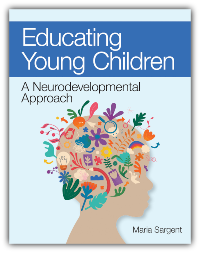4 Engaging Tools for Teaching Respect for Diversity
June 17, 2025
 An important part of teaching respect for diversity is helping young children understand and internalize the value of other people across the world. That can be tough when children lack experiences beyond their communities—but today’s technology tools make it much easier to give young learners wider exposure to the world.
An important part of teaching respect for diversity is helping young children understand and internalize the value of other people across the world. That can be tough when children lack experiences beyond their communities—but today’s technology tools make it much easier to give young learners wider exposure to the world.
Adapted from the new book Educating Young Children by Maria C. Sargent, here are a few engaging ways early childhood educators can help students develop awareness of and empathy for the world beyond their personal experience.
Webcams. Webcams have been set up worldwide and can almost always be accessed for free. The Internet has many sites providing links to these locations and many other possible experiences, including pet daycares, stores, national parks, geysers, farms, volcanoes, bear/reindeer/other wildlife, zoos, eagle nests, major cities, other countries and/or schools in those countries, stadiums, art performances, ant colonies, skiing locations, surfing events, space, and construction sites.
Time-lapse videos. The Internet provides timelapse videos of events that would likely be missed using a live webcam, including many of the events listed under the webcam section. Again, there are many sites that provide these links, including time-lapse videos of gardens growing, buildings being constructed or demolished, eggs hatching, flowers opening, termites and other insects building hives or laying eggs, bridges being constructed, and makeup being put on for Broadway shows.
Point-of-view (POV) experiences. These videos are filmed so the student will feel like they are directly experiencing the event with their own eyes.
- Some of these experiences are live and controllable activities that allow the child to move through a location and walk around (turn) to explore a three-dimensional space. Some of the locations highlighting this type of experience are museums, cruise ships, historical locations like pyramids, castles, sports training facilities, art shows, and other facilities.
- There are also filmed experiences that are still controllable in the sense that they are “moved through” by children at their own pace and under their own direction.
- Lastly, there are POV videos that provide a discrete event that is filmed in such a way that the student will feel they are having a live experience. There are so many of these videos, but especially consider the following experiences since they are typically student favorites: Disney World rides/shows/parades and similar recreation locations such as Universal Studios, Broadway and similar performances, major sporting events, and aquarium shows.
Unique topics and products. The more novel and cutting edge, the more likely children will respond to content associated with this last category, so teachers may need to explore a bit prior to introducing these experiences to the students; they may also not realize the fascinating devices that are available. Consider introducing information on:
- Robots
- Three-dimensional holograms
- Magnetic levitation devices and vehicles
- Prosthetic limbs that are mind-controlled and/or provide a sense of touch/temperature
- Devices to support disabilities such as E-Chroma glasses, which allow those who are colorblind to see colors
The goal is to expose the students to thoughts, products, and concepts that they have never seen before. If used well, the information will not only motivate students to further explore the world outside their own communities but can also serve as the catalyst for them to consider academic content as being useful in their lives.
These four types of tools can give students varied experiences that will be close to the self and/or community level and those that are farther away (country and/or world level). You’ll get the best results by slowly moving students out from their current level of understanding.
To be safe, be sure to thoroughly explore any media prior to its use in any lesson. Some of these websites and videos may include violence and/or aggressive content that is not appropriate for a school setting, and this can’t always be discerned from the description or title of the media. It takes a little time to research, but it’s essential, since many of these sites are not necessarily designed for children.
Do you have a favorite tool for widening children’s exposure to the world? Share it in the comments below!




Write a Comment
Your email address will not be published. Required fields are marked *
Post a Comment